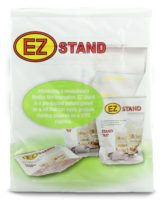Incorporating a new piece of equipment into a packaging line can be extremely difficult if proper technology transfer and training information is not provided by the OEM. That’s because in the early phases of sales and design, world-class OEMs work with customers to discuss existing equipment and process needs and how new equipment will integrate into the existing operation. This integration is especially important, with consideration paid to physical incorporation into the facility, integration with other equipment in the line, operator needs and more.
OEM experts that provide top-quality technology transfer and training take a wide look at the process specifications and goals of incorporating the new equipment to properly plan for equipment startup. When OEMs do not take this careful approach to technology transfer and startup, issues are sure to arise that drastically hinder efficiency and performance.
Pitfalls of inadequate planning
Any new equipment being incorporated into an existing packaging line, as well as equipment being integrated into the launch of a new line, must be considered as part of a larger process, rather than just as a single piece of equipment alone. The equipment must be married into the process in such a way that efficiency of the equipment doesn’t diminish the efficiency of the line as a whole. Without this kind of careful consideration during product manufacturing and technology transfer, integration issues are sure to occur.
For starters, a misunderstanding of the performance of a single piece of equipment as part of a larger process can create line stoppages during operation. When changeover or integration isn’t considered, end users tend to experience significant delays, particularly when a product is first integrated into a line.
Additionally, if the placement of the equipment in the line is not considered during design and manufacturing, the equipment could be inaccessible to operators and maintenance personnel. The configuration issues that result from poor design and integration mean that it will take longer for operators and maintenance workers to address the equipment. If communication between the OEM and customer is not adequate, issues in design – inadequate safety guarding or improper configuration, for example – can cause equipment to be inoperable until issues are resolved, regardless of whether resolution takes days, weeks or months.
A lack of operator training can similarly lead to significant issues and downtime; if operators don’t have a clear understanding of the process and their role in operation and maintenance, significant and costly delays can occur.
TT&T plans solve training and transfer issues
The issues associated with a lack of communication and planning for the transfer of a new piece of equipment can be avoided with the use of technology transfer and training (TT&T) plans, which are designed to manage a variety of aspects of incorporating new piece of equipment into a line and ensure that new equipment and processes will achieve a vertical startup. TT&T plans have a significant positive impact on throughput and profitability, ensuring that new equipment does not become a bottleneck in the overall process.
Key elements of TT&T plans include operator training documentation, maintenance information, process specification and important safety characteristics. OEMs that deliver a comprehensive TT&T plan with new equipment help to ensure that customers’ processes are able to function at their peak performance.
One hallmark of a world-class manufacturing environment is the utilization of the potential of each individual in the supply chain. The machine operator is just as valuable as the quality or manufacturing engineer in ensuring that the greatest possible value is delivered to the customer. An OEM gearing the TT&T plan toward the machine operator is therefore crucial to realizing efficient production operations. The plan functions as extensive training documentation for production operators, providing them with all of the pieces they need to move through the introduction of the equipment and follow through to ensure continued efficiency and performance.
Leading OEMs prepare to deliver a robust TT&T plan in the design phase of the process and equipment. These OEMs design equipment to minimize hard-to-reach areas, sources of contamination and mean time to repair. Each critical task to be performed by the operator is outlined on a cleaning, inspection and lubrication (CIL) checklist, which identifies each respective task, location within the equipment, method and time period to address. A one point lesson plan (OPL) is also provided to depict a simplified visual instruction to compete the task at hand. This documentation helps to ensure the highest possible operational efficiency.
Components of a TT&T plan
The OPL is the cornerstone of the TT&T plan. This simplified training tool allows machine operators without vocational training to learn about and conduct the basic CIL tasks needed to maintain the equipment’s base condition and process centerlines. Operators can also use this training aide to teach new operators as necessary. As operators become more knowledgeable about the equipment they run, they can begin to improve the process with early detection of issues and help to avoid any unplanned downtime.
As with any manufacturing environment, safety needs to be a priority, and training operators in good safety practices and behaviors is essential. Safety procedures, such as proper lock-out/tag-out and how to address the machine are the subject of OPLs in any successful TT&T plan. OEMs play a role in ensuring safety by designing equipment that can be maintained without putting the operator in harm’s way, and in providing adequate training to ensure that operators know how to operate and maintain the equipment safely.
Another main component of the TT&T plan is the CIL checklist. This checklist helps to train operators in the basic maintenance of the equipment, such that they understand the critical parameters of the equipment and monitor these regularly as part of their role. The CIL checklist serves as a guide for the operator to monitor and maintain equipment at basic level, helping to identify and avoid potential issues and their associated downtime.
In doing so, operators not only simplify the work required of the maintenance team, but also are able to give the team time to plan necessary work during non-running time. Overall, a successful TT&T plan helps to make sure that operators understand potential problems, identify critical areas and are capable of inspecting, cleaning and lubricating their own equipment as necessary.
How TT&T plans aid in world-class manufacturing
OEMs that understand world-class manufacturing methodologies, exemplified by the creation and distribution of TT&T plans to customers along with new equipment, can provide technology and machinery that can achieve a vertical startup and high levels of operating efficiency. TT&T plans are essential to achieving this objective and avoiding unplanned downtime.
As machine operators are the first line of defense when it comes to monitoring and improving the production process, engaging the operators to perform basic maintenance and inspection tasks adds significant value to the organization and its customers.



